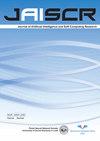A Novel Method for Fast Generation of 3D Objects from Multiple Depth Sensors
IF 2.4
3区 计算机科学
Q2 COMPUTER SCIENCE, ARTIFICIAL INTELLIGENCE
Journal of Artificial Intelligence and Soft Computing Research
Pub Date : 2023-03-01
DOI:10.2478/jaiscr-2023-0009
引用次数: 0
Abstract
Abstract Scanning real 3D objects face many technical challenges. Stationary solutions allow for accurate scanning. However, they usually require special and expensive equipment. Competitive mobile solutions (handheld scanners, LiDARs on vehicles, etc.) do not allow for an accurate and fast mapping of the surface of the scanned object. The article proposes an end-to-end automated solution that enables the use of widely available mobile and stationary scanners. The related system generates a full 3D model of the object based on multiple depth sensors. For this purpose, the scanned object is marked with markers. Markers type and positions are automatically detected and mapped to a template mesh. The reference template is automatically selected for the scanned object, which is then transformed according to the data from the scanners with non-rigid transformation. The solution allows for the fast scanning of complex and varied size objects, constituting a set of training data for segmentation and classification systems of 3D scenes. The main advantage of the proposed solution is its efficiency, which enables real-time scanning and the ability to generate a mesh with a regular structure. It is critical for training data for machine learning algorithms. The source code is available at https://github.com/SATOffice/improved_scanner3D.多深度传感器快速生成三维目标的新方法
扫描真实的三维物体面临许多技术挑战。固定溶液允许精确扫描。然而,他们通常需要特殊和昂贵的设备。竞争激烈的移动解决方案(手持扫描仪、车载激光雷达等)不允许对扫描对象的表面进行准确和快速的映射。本文提出了一种端到端的自动化解决方案,可以使用广泛可用的移动和固定扫描仪。相关系统基于多个深度传感器生成物体的完整3D模型。为此,扫描对象被标记。标记类型和位置自动检测并映射到模板网格。自动为扫描对象选择参考模板,然后根据来自扫描仪的数据进行非刚性转换。该解决方案允许快速扫描复杂和不同大小的对象,构成一组用于3D场景分割和分类系统的训练数据。该方案的主要优点是效率高,可实现实时扫描和生成具有规则结构的网格。它对于机器学习算法的训练数据至关重要。源代码可从https://github.com/SATOffice/improved_scanner3D获得。
本文章由计算机程序翻译,如有差异,请以英文原文为准。
求助全文
约1分钟内获得全文
求助全文
来源期刊

Journal of Artificial Intelligence and Soft Computing Research
COMPUTER SCIENCE, ARTIFICIAL INTELLIGENCE-
CiteScore
7.00
自引率
25.00%
发文量
10
审稿时长
24 weeks
期刊介绍:
Journal of Artificial Intelligence and Soft Computing Research (available also at Sciendo (De Gruyter)) is a dynamically developing international journal focused on the latest scientific results and methods constituting traditional artificial intelligence methods and soft computing techniques. Our goal is to bring together scientists representing both approaches and various research communities.
 求助内容:
求助内容: 应助结果提醒方式:
应助结果提醒方式:


